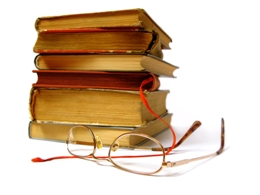While journalists get away with writing just the first rough draft of history, United States Supreme Court litigants prepare briefs hoping to shape the final word. Polishing that draft requires the help of an experienced Supreme Court brief printer, and the professional proofreaders who check every word and punctuation mark to make sure the finished document can stand the test of time.
After we review and typeset your original copy, we hand both the original and the typeset versions over to a team of two readers. The first proofreader reads aloud from the original, and the other proofreader follows along with the typeset proof, inserting notations as necessary. This method feeds the text through four mental screening processes: read the original, convert to spoken language, listen to the verbalized text, and match to the visualized typeset copy. The technique is “old school,” and it is the only process thorough enough for a Supreme Court filing. And they’re fast. A proofreading team can typically read, annotate and process about 25 formatted pages an hour. A proofreader’s job is not to correct the text, but to note possible errors for the drafter to consider. When proofreaders encounter a potential problem—whether it be a language, grammar, formatting, or rule compliance issue—they annotate the typeset proof with special marks that concisely identify their concern or question. You can see a few of the more common proofreaders’ marks here. After reviewing the annotated proof, the drafter can then discuss changes with our corrections specialists, who will make the final adjustments before printing. Professional proofreading is not for everyone. It requires focus and stamina. And the best readers can maintain a critical distance from the subjects they read. Supreme Court briefing can be dry and technical, or it can be profound and emotional. A proofreader must be able to expertly evaluate the text regardless of the nature of the document. In return, Supreme Court brief proofreaders get a rare chance to peer into the inner workings of current events, and watch as they become history. They have read the fine details of the most profound civic controversies of our time, such as gay marriage, Obamacare, campaign finance, gun rights, and capital punishment. They are also privy to a comprehensive survey of the many legal disputes that never make it to the front page. If you want to know what’s going on in America today, ask a Cockle proofreader. *Spacing between “F.” and “3d,” and a 2- or 3-digit number range style. Proofreaders are special. They read text differently than the rest of us. They know language; they know formatting; they know details. If you cite to “78 F.3d at 360-61” on page 3, then to “60 F. 3d at 478-480” on page 29, they will note the inconsistencies (there are two*). If your Question Presented asks, “Whether the Fifth Circuit…,” they will recommend a period at the end of that sentence (indirect questions do not get question marks). If a court opinion in your appendix refers to a case in “the California First District Court of Appeals,” they will ask if you would like to insert a “
Proofreaders are special. They read text differently than the rest of us. They know language; they know formatting; they know details. If you cite to “78 F.3d at 360-61” on page 3, then to “60 F. 3d at 478-480” on page 29, they will note the inconsistencies (there are two*). If your Question Presented asks, “Whether the Fifth Circuit…,” they will recommend a period at the end of that sentence (indirect questions do not get question marks). If a court opinion in your appendix refers to a case in “the California First District Court of Appeals,” they will ask if you would like to insert a “